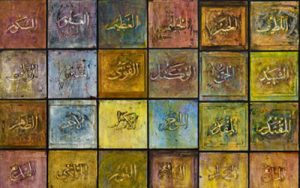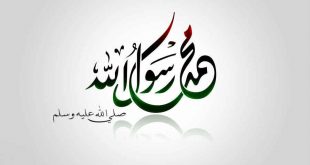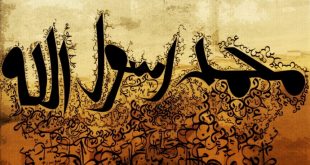 Centres of Learning:
Centres of Learning:
Keeping in view the importance of knowledge highlighted by Qur’an and the Prophet (peace be upon him), the system of education in the Muslim world was developed. The learning took place in a variety of institutions, among them; the Maktab (kuttab), or elementary school; the palace schools; the Halqah, or study circle, bookshops and literary salons; and the various types of colleges, the meshed, the masjid, and the madrasah. All the schools taught essentially the same subjects. The simplest type of early Muslim education was offered in the mosques, where scholars who had congregated to teach the Qur’an and Hadith began, before long, to teach the religious sciences to the keen adults. Mosques increased in number under the caliphs, Some mosques, such as that of al-Mansur, built during the reign of Harun ar-Rashid in Baghdad, or those in Isfahan, Mashhad, Ghom, Damascus, Cairo, and the Alhambra (Granada-Spain), became centres of learning for students from all over the Muslim world. Each mosque usually contained several study circles (Halqah), so named because the teacher was, as a rule, seated on a dais or cushion with the pupils gathered in a semicircle before him.
Elementary schools (maktab, or kuttab), in which pupils learned to read and write, were developed into centres for instruction in elementary Islamic subjects. Students were expected to memorize the Qur’an as perfectly as possible. Some schools also included in their curriculum the study of poetry, elementary arithmetic, physical sciences, penmanship, ethics (manners), and elementary grammar. Maktabs were quite common in almost every town or village in the Middle East, Asia, Africa, Sicily, and Spain.
Institutions and Universities:
Madrasahs existed as early as the 9th century, but the most famous one was founded in 1057 by the vizier Nizam al-Mulk in Baghdad. The Nizamiyah, devoted to Sunnite learning, served as a model for the establishment of an extensive network of such institutions throughout the eastern Islamic world, especially in Cairo, which had 75 madrasahs, in Damascus, which had 51, and in Aleppo, where the number of madrasahs rose from six to 44 between 1155 and 1260. Important institutions also developed in the Spanish cities of Cordoba, Seville, Toledo, Granada, Murcia, Almería, Valencia, and Cádiz, in western Islam, under the Umayyads.
Al-Azhar University at Cairo, Egypt is the chief centre of Islamic and Arabic learning in the world, founded by the Fatimids in 970 C.E with a large public liberary and several colleges. The basic program of studies was, and still is, Islamic law, theology, and the Arabic language. Later the philosophy, medicine and sciences were added to the curriculum. Gradually these subjects got eliminated after having reached climax resulting in decline. In the 19th century philosophy was reinstated. The modernization have resulted in the addition of social sciences at its new supplementary campus. Presently a number of Islamic Universities have been established in the Muslim countries where apart from theology, the other sciences are also taught, but they are few in numbers. There are thousands of traditional madrasah and Dar-ul-Aloom in countries with Muslim populations where only Islamic theology and religious sciences are taught, producing millions of ulema (religious scholars) with almost no knowledge of social, physical sciences and other branches of knowledge.
Early Muslim Education:
Early Muslim education emphasized practical studies, such as the application of technological expertise to the development of irrigation systems, architectural innovations, textiles, iron and steel products, earthenware, and leather products; the manufacture of paper and gunpowder; the advancement of commerce; and the maintenance of a merchant marine. After the 11th century, however, denominational interests dominated higher learning, and the Islamic sciences achieved preeminence. Greek knowledge was studied in private, if at all, and the literary arts diminished in significance as educational policies encouraging academic freedom and new learning were replaced by a closed system characterized by an intolerance toward scientific innovations, secular subjects, and creative scholarship. This denominational system spread throughout eastern Islam between about 1050 and 1250 C.E.
Pursuit of Scientific Knowledge & Libraries:
Thus during first half of millennia of its history, Islamic civilization has been keen to gain knowledge, be it physics, chemistry (alchemi), algebra, mathematics, astronomy, medicine, social sciences, philosophy or any other field. The high degree of learning and scholarship in Islam, particularly during the ‘Abbasid period in the East and the later Umayyads in West (Spain), encouraged the development of bookshops, copyists, and book dealers in large, important Islamic cities such as Damascus, Baghdad, and Cordoba. Scholars and students spent many hours in these bookshop schools browsing, examining, and studying available books or purchasing favourite selections for their private libraries. Book dealers traveled to famous bookstores in search of rare manuscripts for purchase and resale to collectors and scholars and thus contributed to the spread of learning. Many such manuscripts found their way to private libraries of famous Muslim scholars such as Avicenna, al-Ghazali, and al-Farabi, who in turn made their homes centres of scholarly pursuits for their favourite students.
Role of Islam in Renaissance & Enlightenment:
Europe owes it awakening form the dark ages to the Renaissance and Enlightenment by the transfer of knowledge including lost Greek heritage through the Muslim scholars and centers of learning at Spain and their contact with the Muslim world through Crusades. As long as Muslims continued the pursuit of all branches of useful worldly knowledge of physical science, technology along with the religious sciences, the Islamic Civilization was at its zenith.
Stages of Evolution of Learning Process:
The education and learning process may be divided in to various stages among the Muslims. The renaissance of Islamic culture and scholarship developed largely under the ‘Abbasid administration in Eastern side and under the later Umayyads in the West, mainly in Spain, between 800 and 1000 C.E. This latter stage, the golden age of Islamic scholarship, was largely a period of translation and interpretation of classical thoughts and their adaptation to Islamic theology and philosophy. The period also witnessed the introduction and assimilation of Hellenistic, Persian, and Indian knowledge of mathematics, astronomy, algebra, trigonometry, and medicine into Muslim culture. Whereas the 8th and 9th centuries, mainly between 750 and 900 C.E, were characterized by the introduction of classical learning and its refinement and adaptation to Islamic culture, the 10th and 11th were centuries of interpretation, criticism, and further adaptation. There followed a stage of modification and significant additions to classical culture through Muslim scholarship. Then, during the 12th and 13th centuries, most of the works of classical learning and the creative Muslim additions were translated from Arabic into Hebrew and Latin. The creative scholarship in Islam from the 10th to the 12th century included works by such scholars as Omar Khayyam, al-Biruni, Fakhr ad-Din ar-Razi, Avicenna (Ibn Sina), at-Tabari, Avempace (Ibn Bajjah), and Averroës (Ibn Rushd).
 Komashisha
Komashisha



